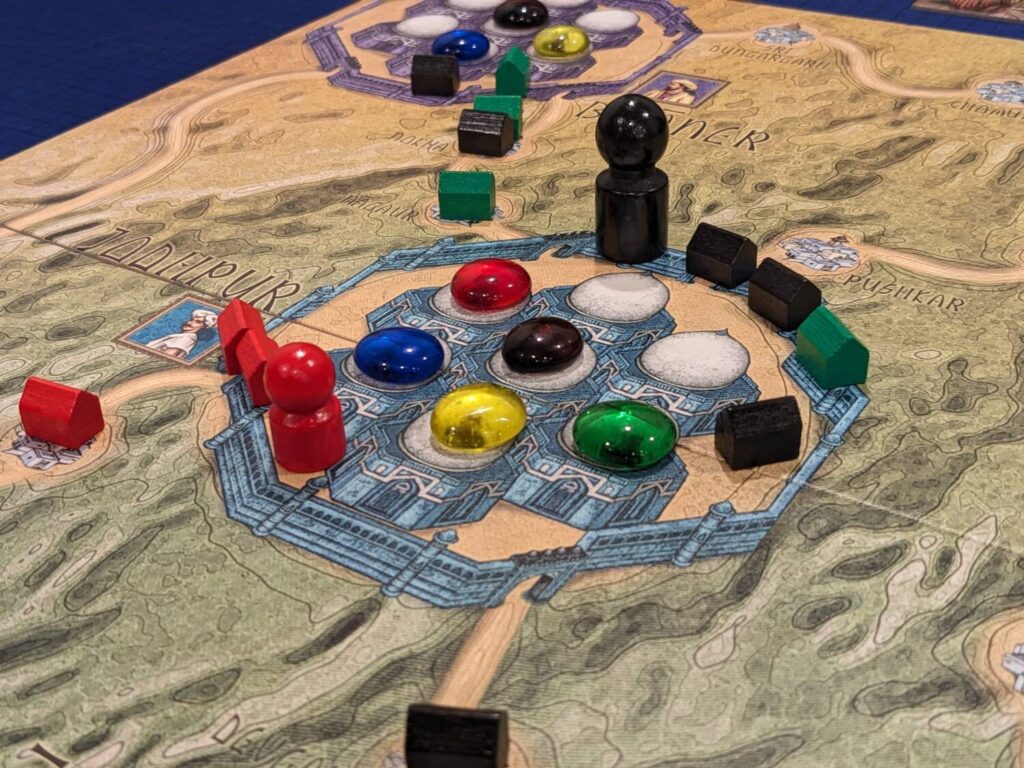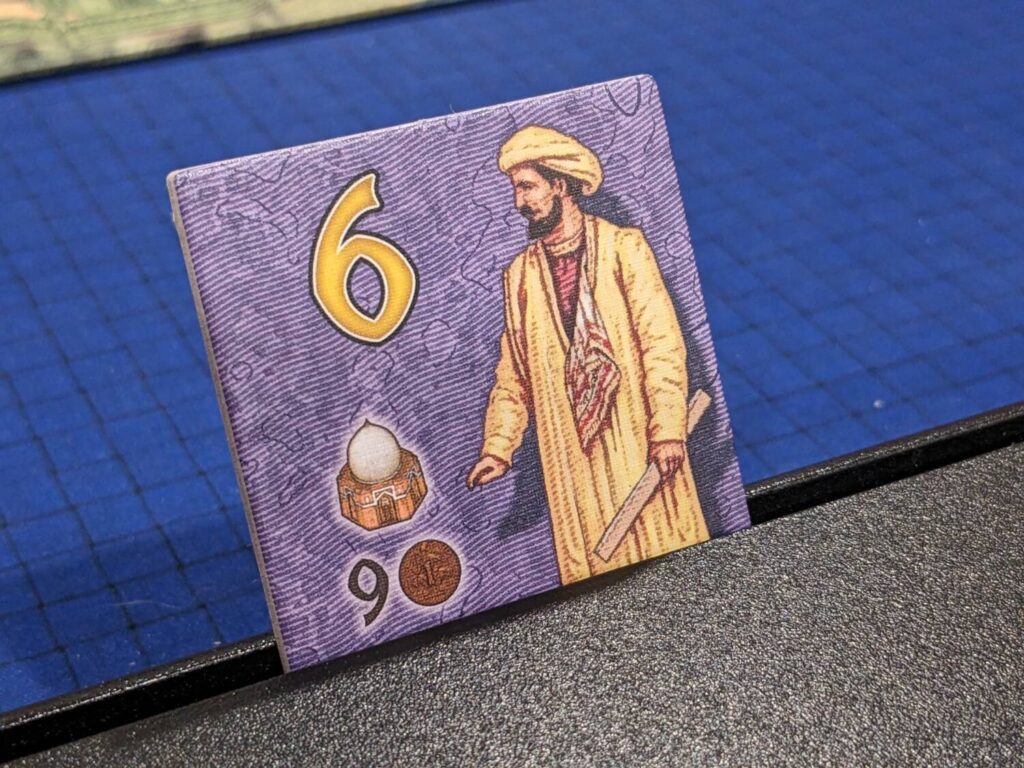The guys in my Wednesday gaming group started a push to play more of the old, dust-covered games at the bottom and backs of our respective game closet shelves. The premise was simple: let’s try to remember why we keep all these old games when all we ever play now are the newest, shiniest things in shrink.
Right on the spot, the Dusty Euro Series was born, and I’ve enlisted multiple game groups to help me lead the charge on covering older games.
In order to share some of these experiences, I’ll be writing a piece from time to time about a game that is at least 10 years old that we haven’t already reviewed here at Meeple Mountain. In that way, these articles are not reviews. These pieces will not include a detailed rules explanation or a broad introduction to each game. All you get is what you need: my brief thoughts on what I think about each game right now, based on one or two fresh plays.

Maharaja: What Is It?
Maharaja: The Game of Palace Building in India was published in 2004 by Phalanx Games and was designed by Michael Kiesling and Wolfgang Kramer. Kiesling and Kramer have gone on to design so many games together that it’s hard to keep up, but some of the more famous designs include Tikal and The Palaces of Carrera. (As a solo work, Kiesling designed Azul and its many expansions.) Maharaja—a game that has since been republished as simply Maharaja in 2021 by Cranio Creations—is one of the earliest games I’ve played that was designed by this duo.
One look at the cover and I knew I was in “dusty” territory. 2-5 players are racing to build seven palaces around India’s most prominent cities, in one of seven different locations that must be traversed by a player’s architect in order to build both palaces and houses as quickly as possible. In each round, a different region becomes the active scoring area for that turn, and players use a secret action selection toy that looks like a small analog clock face to plot their turn.
Then, using one of six characters that each grant their owner a special power, players take two actions before that round’s area is scored in an amount of gold that scales based on player count. This being an olden-time Euro, there aren’t even resources that need to be managed to erect a building, you just need to have enough cash.
Whenever a player gets their seventh palance on the board—or the game has gone ten rounds—play ends. If someone built their seventh palace first, they win. If multiple players have built their seventh palace in the same round, or it’s the end of the tenth round, the player who has the most leftover gold wins.

Maha-ya-ya!
Maharaja: The Game of Palace Building in India ticks a lot of the right boxes for me as a lover of a good efficiency puzzle. (One thing I don’t love? That sad, wordy title. Also, I don’t know of another region that has a “Maharaja”, so isn’t it obvious that this game is set in India?)
I love the action selection mechanic, particularly in the way it is tied to the ownership of the six different character powers. It was interesting to see what actions each player would select as they built up their presence around the map, and how they would include either their current ability or use one of their two actions to switch characters to take advantage of a different power.
Doubling down on that, each character has a number to determine turn order and tiebreakers for scoring when each region is scored. Sometimes a player would take the priority #1 or #2 characters just to ensure they would win a tie during scoring as one of their two actions.
The rules around building are a little loose—again, no resources are required to build any houses or palaces—and money can get tight thanks to how architects get from one city to the next. Often, money changed hands between the players because architect figures had to use the various roads connecting disparate locations. In our three-player game, two of the seven locations were never even built. The rotating nature of which areas will score is also driven by the players and can be somewhat easily manipulated thanks to one of the actions on the clock toy.
The lack of building in certain areas left much of our board empty, and it feels like Maharaja needs a full player count of five to really shine. (Many of the modern area control games I’ve tried, most recently Altay: Dawn of Civilization, simply close off a portion of the board with fewer players.)
The player aid (yes, a player aid in a game from 20+ years ago!) has everything you need to not only play the game, but set up the game as well. The mini clock face used to plan actions is glorious. Rounds are snappy and scoring is very easy to parse based on an area majority tied to points awarded for each player’s pieces in the active scoring area, with a bump given to the player who has built a palace in the center space of a given region.
Most of Maharaja worked for me, save for the occasional lack of interaction on the overly-spacious map (it was certainly spacious in that three-player format). Otherwise, I look forward to another shot at Maharaja soon so that I don’t forget the rules. Kiesling and Kramer continue to impress, even with games that I missed the first time around.











Add Comment